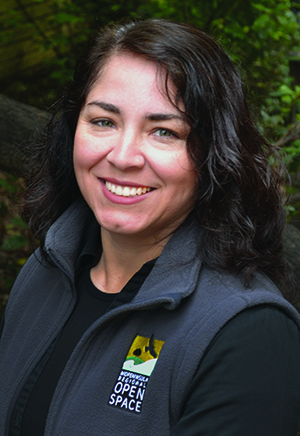 Bay Area landscapes have been shaped over millennia by people, animals and fire. We use science and history to learn the tools, practices and occurrences that have affected our changing natural world. Science and history teach us how to be good stewards, caring for the land that, in turn, cares for all of us with clean air and water, local food and respite from urban life.
Bay Area landscapes have been shaped over millennia by people, animals and fire. We use science and history to learn the tools, practices and occurrences that have affected our changing natural world. Science and history teach us how to be good stewards, caring for the land that, in turn, cares for all of us with clean air and water, local food and respite from urban life.
California was once populated by vast herds of elk and other grazers, now mostly extinct. Native Americans tended plants by hand and managed vast acreages with fire for thousands of years to ensure plentiful food, fiber and medicine. They understood that many California native plant communities rely on periodic disturbances from people, animals and fire to survive and thrive.
The gold rush brought a new wave of inhabitants and disturbances that focused on immediate gains versus long term stability and sustainability. These historic clear-cutting, overgrazing, mining and fire suppression activities impacted the quality, resiliency and health of our local ecosystems. We see second-growth forests that are more dense and uniform in age. Once open areas flourishing with native grasslands are slowly vanishing due to encroachment by invasive weeds and brush. And dense forests and brushlands raise concerns about heightened fire risks given our changing climate and increasing development pressures in wildland-urban boundaries.
Here at Midpen, we are working towards a future where old-growth forests and healthy native grasslands are more resistant to fire. Where our natural lands support thriving habitats for local plants and animals, healthy watersheds with clean water, and resilient landscapes with clear air and high biodiversity for people to enjoy. We are using science and historically beneficial tools to heal the landscape through:
- People: An innovative new forestry pilot program is being planned for La Honda Creek Preserve to help Midpen and others in the conservation community learn how to bring formerly logged forests back to old-growth conditions.
- Animals: More than 11,000 acres on the San Mateo County coast are managed under Midpen’s conservation grazing program to restore native grasslands while supporting local agriculture, using cattle to replicate the beneficial foraging and fuel management work once accomplished by California’s historic wildlife herds.
- Fire: We are in the process of reintroducing prescribed fire to our land management toolbox in 2022, using controlled fires to reduce fuel loads while promoting the growth of fire-dependent and resilient landscapes in our region.
Read through this newsletter to learn about some of the other ways your ongoing support for Midpen is helping to return health and balance to the grasslands, forests, watersheds and baylands across your 26 local open space preserves.

Ana María Ruiz
General Manager

